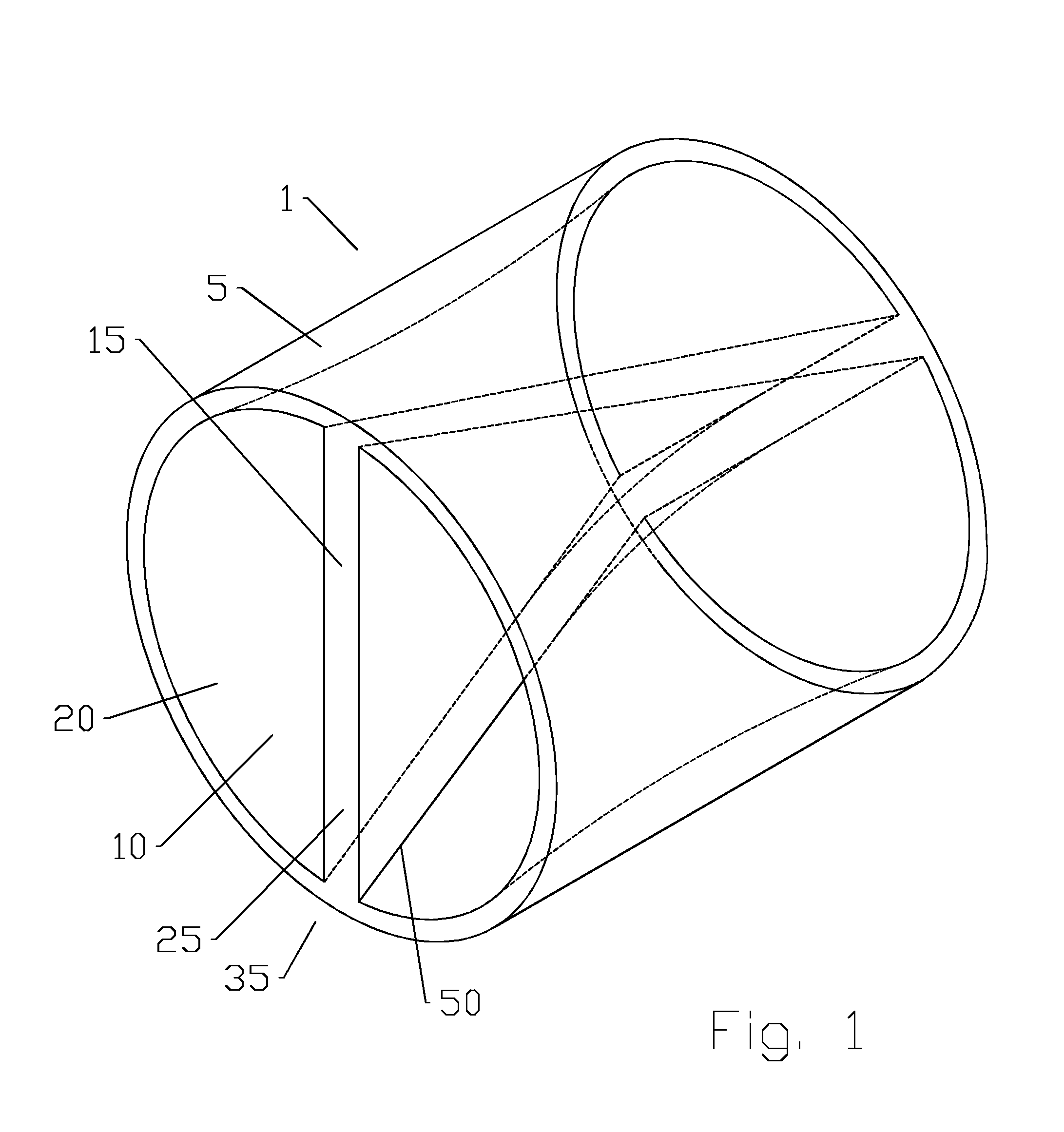Twist septum polarization rotator
a rotor and twist septum technology, applied in the field of polarization rotors, can solve the problems of plurality of layers introducing alignment and/or signal leakage issues, increasing the total number of parts, and complicating manufactur
- Summary
- Abstract
- Description
- Claims
- Application Information
AI Technical Summary
Benefits of technology
Problems solved by technology
Method used
Image
Examples
Embodiment Construction
[0024]The inventors have recognized that, when care is taken to avoid overhanging edges, a polarization rotator with a twist septum may be cost efficiently manufactured with a high level of precision by injection molding, casting or the like, reducing alignment and or sealing issues associated with multiple layer polarization rotation assemblies. Further, in applications in which a high density array of polarization rotators is required, prior issues with access to individual sidewalls, for example for applying through sidewall pin interconnections or the like may be eliminated.
[0025]As shown for example in FIGS. 1-3, an exemplary waveguide polarization rotator 1 has a unitary body 5 with a bore 10 in which a diametral septum 15 of the unitary body 5 extends between the sidewalls 20. The septum 15 twists, along the diameter, between a first end 25 of the septum 15 and a second end 30 of the septum 15. Thereby, an RF signal traveling along the bore 10 has a polarization shift corresp...
PUM
| Property | Measurement | Unit |
|---|---|---|
| Fraction | aaaaa | aaaaa |
| Angle | aaaaa | aaaaa |
| Diameter | aaaaa | aaaaa |
Abstract
Description
Claims
Application Information
 Login to View More
Login to View More - R&D
- Intellectual Property
- Life Sciences
- Materials
- Tech Scout
- Unparalleled Data Quality
- Higher Quality Content
- 60% Fewer Hallucinations
Browse by: Latest US Patents, China's latest patents, Technical Efficacy Thesaurus, Application Domain, Technology Topic, Popular Technical Reports.
© 2025 PatSnap. All rights reserved.Legal|Privacy policy|Modern Slavery Act Transparency Statement|Sitemap|About US| Contact US: help@patsnap.com



